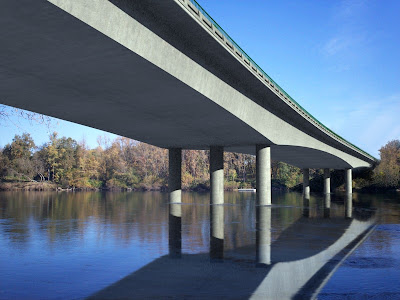Emerald city blacks out for brighter future

WHERE were you when the lights went out for Earth Hour?
Last night, from 7.30 to 8.30, a city fond of splashing the sky with fireworks and laser displays took delight in quite the opposite.
Framed between an almost full moon and starlight above, and street lights and glow-worms of traffic below, the icons of Sydney's skyline were silhouettes in the soft darkness.
To draw attention to the simple ways we can fight global warming, Sydneysiders were invited to turn off their lights for an hour, launching a ongoing campaign aimed at reducing the city's greenhouse gas emissions by 5 per cent this year alone.
An initiative of Fairfax Media and World Wildlife Fund Australia, Earth Hour won the support of more than 2000 businesses and government departments, along with some 65,000 households.
At the official launch at Mrs Macquaries Chair, guests watched as 7.30pm ticked over, triggering the man-made blackout.
"It's an hour of active, thoughtful darkness, a celebration of our awakening to climate change action," actor Cate Blanchett said, as candles and torches replaced electric light in hundreds of offices and thousands of homes - in restaurants and hotels, house parties, picnics, on beaches, at a bush dance and even a wedding.
The Harbour Bridge, Anzac Bridge and the Northbridge suspension bridge switched off the floodlights on their arches and pylons, leaving on only road lighting for safety.
The Opera House sails were plunged into darkness for the first time, while at Kings Cross an icon of another kind, the giant Coca-Cola sign, was switched off for the first time since its installation in 1974.
In the CBD, Centrepoint Tower, Luna Park and Sydney Aquarium flicked off the lights, while residents of apartment blocks rallied to the cause. Of an estimated 160,000 people who live in the city's heart, many showed support by hitting the switch.
And the cause was taken up beyond the CBD - to Taronga Zoo and Bondi Beach, across suburban Sydney, to South Coast businesses and homes, and as far off as the national capital, where the lights illuminating the coat of arms on Parliament House were dimmed. Butfor a scatter of blinking navigation lights, Sydney Harbour dissolved into darkness in what Lord Mayor Clover Moore described as "the New Year's Eve fireworks in reverse".
The lights went out on Fort Denison, leaving only the glow of the lanterns and candles of partygoers on the 150-year-old fort to mark the middle of the harbour.
At The Rocks, Circular Quay, The Domain, Blues Point and other popular vantage points for fireworks spectacles, people gathered to watch Sydney turn on the dark.
While at entertainment and sports venues the show went on, as the show must, theatres and stadiums switched off all but essential outdoor lighting.
City hotels, bars and other venues also dimmed down and some featured strictly acoustic acts.
One restaurant, Will and Toby's at Manly, not only entertained patrons with unplugged jazz but also offered mainly cold dishes on its menu.
Sydney Observatory opened its doors to let stargazers see the night sky over Sydney as they had never seen it before.
Faint stars usually hidden by light pollution became clearly visible.
WWF Australia chief executive Greg Bourne told a recent meeting of Sydney business leaders that Earth Hour was "just the start of what we can do collectively to turn the corner on climate change".

 ste, septic, and fuel tanks. Additionally, the Division issues
ste, septic, and fuel tanks. Additionally, the Division issues 

























































